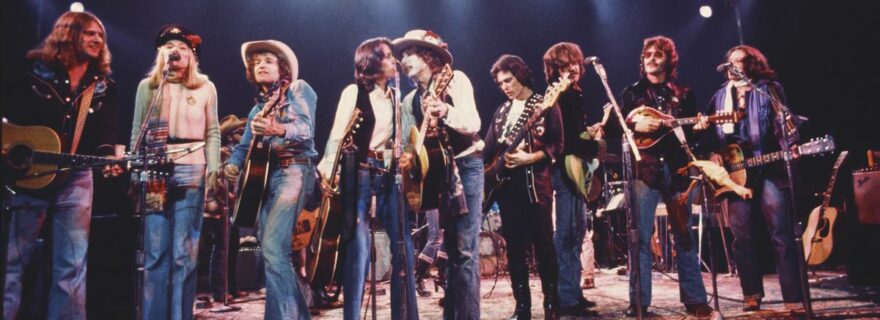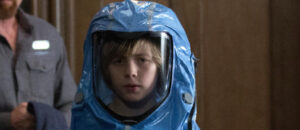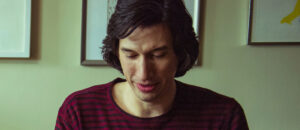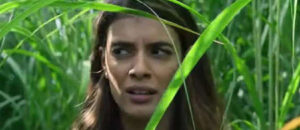Rolling Thunder Revue: A Bob Dylan Story
Movie Rating:
5
Can documentaries that lie tell deeper truths? What happens when a film ostensibly presented as non-fiction has actors, famous or otherwise, completely bullshitting stories about one of the most famous rock gigs in history? Does this elevate the fun or make it more obnoxious? Like much of what made Bob Dylan one of the greatest artists of the last century, it’s a combination of both, showcased brilliantly in Martin Scorsese’s new Netflix documentary Rolling Thunder Revue.
In many ways, this film comes with lots of baggage. First, it’s a terrible way to be introduced to Bob Dylan, like delving into a novel’s last few chapters and trying to figure out what the big deal was in the first place. Ostensibly, the documentary chronicles the 1975 tour by Dylan and friends, itself a reaction to the shows he did with The Band the year before – which were in turn an answer to the 1965-66 concerts that saw the folk icon go electric. There’s a lot of meta taking place here simply in terms of setlist and arrangement, so it’s no surprise that the film feels somewhat unsettled, as if it’s an inside joke we’re not all privy to.
It actually takes a while to glean just what tricks are being played, even for those well versed in the history of the period. The film checks off many of the relevant historical points, contextualizing the concerts with a specific period in Dylan’s career. What is factual is that these shows were meant to be a counter to Dylan’s grand stadium concerts, a kind of ramshackle, ramblin’ affair where small venues would get taken over by a group of musicians who formed a kind of troupe. With ghostly makeup, feathered hats, and wild-eyed exuberance, Dylan’s catalog was reworked with arrangements that often radically departed from their origins, amplifying certain sections and using the same sloshy gait that the “Desire” album sessions provided.
The footage, most of it assembled from the 1978 documentary Dylan directed called Renaldo & Clara, shows the musician at his most energized and impactful. Having heard the music for years, there’s something particularly powerful about seeing these interactions, feeling the wide-eyed fury of the man spitting out some of his most acerbic lyrics. There’s a ferocity at play, beyond the “I don’t believe you” retort to the “Judas!” scream, a drug-fueled, mid-’70s level of debauched intensity that’s both compelling and shocking in equal measure.
The film has scenes of absolute wonder, such as when Joni Mitchell teaches the “Coyote” chords to Roger McGuinn and Dylan at Gordon Lightfoot’s house. The now classic song feels both fresh and tentative, and the look of a half-exposed face of Lightfoot, removed from the circle of performance, is startling and even moving. It’s a weird thing to do at a guest’s place, removing him from the moment, but it shows how Dylan’s spirit could be subsumed to sideman status standing beside powerful women like Ms. Mitchell.
Or take the talk of marriage between Joan Baez and Bob, a sweltering bit of interaction that makes one feel like an eavesdropper on one of the most tumultuous relationships of the era. Each plays a role, chiding playfully with an undercurrent of hurt, a recognition of time long past yet flickering embers of what drew them together in the first place. It’s exquisite, and perfectly truthful.
Midway through, Rep. Jack Tanner shows up and talks about how President Carter got him into one of the shows, and the curtain drops. Anyone who knows of Robert Altman and Gary Trudeau’s Tanner ’88 mockumentary realized the ruse, as actor Michael Murphy takes the screen to lie to our faces. So, what then of a nymphette Sharon Stone in KISS-wear making her way as a gopher, serenaded by Bob to the lines of “Makes love just like a woman, but she breaks just like a little girl”? Or can director Stefan van Dorp really be the guy who took all that footage, and was he in fact in a fight with Rolling Stone scribe Larry “Ratso” Sloman? And could Jim Gianopulos really be the one who had all the money on the line?
These crazy twists of fate and truth lie at the heart of Scorsese’s lies. Rolling Thunder Revue is an anti-documentary about an anti-tour. This isn’t simply “fake news,” but a new kind of mythologizing, one that playfully rather than maliciously takes music doc tropes and interweaves them with genuine truths. Hurricane Carter provides testimony while others obfuscate. Contemporaneous interviews show half-truths while newly conducted conversations with Baez and Dylan are genuinely revealing. It takes the mask off the tour only to find that the face underneath continues to fabricate with a bemused smile, the rictus of dishonesty or the inscrutable smirk of revelation.
The music performances are stellar. When the concert film is actually a concert film, it brings true moments of glory. The restoration is quite impressive, and while most will see it on small screens, it makes for a theatrical experience like few others. Coupled with the swirling half-truths and outrageous lies in the interviews, the end result is a film that gnaws at you, making you feel unsettled and uncertain even as you’re lifted up by the spirit of the musical celebration.
Scorsese has rarely been this playful, and certainly never been this brashly provocative with a hybrid between fiction and non-fiction. Just as Robert Allen Zimmerman became the Bob Dylan who brought it all back home, broke that up and then made tapes in the basement, so to the Rolling Thunder concerts became Renaldo and Clara, which became Scorsese’s Rolling Thunder Revue, a cumulative procession where with each telling the stories became ever more fabrications by unapologetic fabulists.
While Rolling Thunder Revue is a poor way to be introduced to the trickster Bob Dylan and his retinue of rabble-rousing compatriots, the film is an absolute treat for those steeped in both the legend and lies of the man. This is a kind of graduate-level Dylanology, something that truly shines when you see all the mechanisms being employed, the changes made to song and story, and how each reflects on what came before and what was to transpire soon in the future. It’s a film of stark contrast between moments of profound truth and outright fabrication, and is as jangly, driven, and impactful as the events it helps to document.




